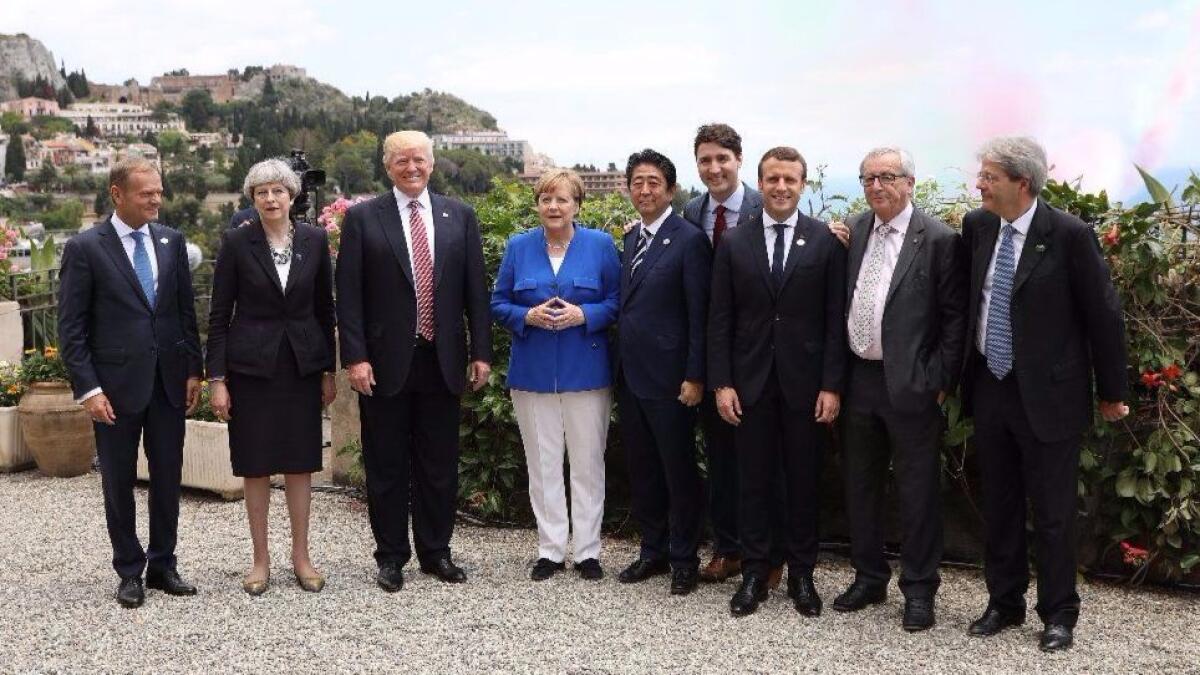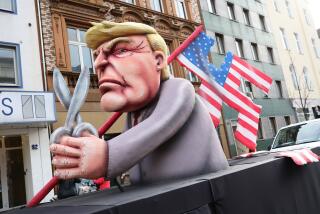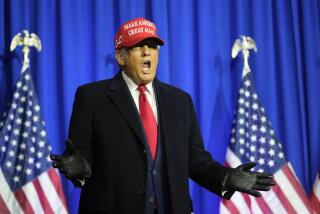Trump wants to cut bilateral trade deals, but what if nobody comes to the table?

In his first swing through Europe as president, Donald Trump left little doubt that he would pursue his “America First” policy in economic relations, creating a stir by denouncing Germany’s trade surplus with the U.S. and promising to end it.
“The Germans are bad, very bad,” Trump was quoted as saying during a meeting in Brussels with European Union leaders. Trump’s top economic advisor, Gary Cohn, later confirmed the statement, saying it referred only to Germany’s trade practices, not to its people or the country.
Trump has criticized Germany’s trade practices before, right to Chancellor Angela Merkel’s face, and suggested that he wanted to negotiate directly with German leaders to fix America’s unbalanced trade with Europe’s largest economy.
But as part of the European Union, Germany does not negotiate trade agreements. That authority rests with the EU. In other words, whatever problem Trump may have with Germany is really a multilateral one, not bilateral.
That distinction may seem esoteric, but it has taken on great significance since the start of Trump’s tenure. The president has clearly indicated his desire to break from the past by negotiating trade deals one-on-one, as opposed to sitting down with a bloc of countries.
Trump argues that the U.S. has greater leverage bargaining with individual countries, reasoning that America’s large market means it has more to offer and that virtually every country is running a trade surplus with the U.S.
But the bilateral path is a nonstarter in Germany’s case. And it won’t be much easier elsewhere.
Since Trump formally withdrew from the Trans-Pacific Partnership, fulfilling a campaign promise on his first day in office, not one of the other 11 Trans-Pacific countries has come forward to express a desire for an individual deal with the U.S.
Instead, Japan, Australia and the others are trying to push through the Pacific Rim free-trade agreement without the U.S. Their hope is that they can salvage the hard-fought pact and that America, which would be left out of tariff savings and other benefits, would feel the need to sign back on.
There’s little chance Trump will reverse course, but the reluctance of nations to negotiate with the U.S. alone points to the difficulties ahead for the president’s economic agenda and his goal to forge better trade deals, which he sees as key to expanding the economy and creating higher-paying jobs.
The reluctance was evident at last weekend’s gathering of Asia-Pacific economies in Hanoi, where the U.S. Chamber of Commerce met with trade officials from about half of the 21 economies represented.
“I didn’t see a lot of countries lining up or raising their hands to volunteer to do bilaterals with the U.S.,” said Tami Overby, the chamber’s senior vice president for Asia.
Overby said other countries will be closely watching how the Trump administration proceeds in renegotiating the North American Free Trade Agreement. Those negotiations could begin as soon as mid-August.
Trump’s chief trade negotiator, Robert Lighthizer, has said he expects much of the NAFTA talks with Canada and Mexico to be two-sided, and his statement at the Hanoi meeting reaffirmed “the president’s strong commitment to promoting bilateral free and fair trade.”
Trump’s preference for bilateral talks repudiates at least part of the post-World War II economic order established under the U.S. leadership. That order includes several multi-nation institutions, including the World Trade Organization, an adjudicating body with more than 160 countries as members.
The Trump administration has been sharply critical of the WTO as it seeks to advance the president’s America First move away from globalism.
For former President Obama, the Trans-Pacific Partnership was the linchpin of a strategy to re-assert American influence in Asia amid China’s increasing political and economic power. Obama argued that it was critical for the U.S., not China, to set the trade rules and standards for that region. But the populist antagonism at home toward free trade, fueled not just by Trump, but also Democratic presidential candidates, doomed Obama’s Pacific accord.
With the U.S. out of the Trans-Pacific Partnership and Trump’s adherence to a kind of economic nationalism, China has stepped up on the international stage.
Not long ago, China’s economic diplomacy somewhat resembled what Trump appears to advocate for the U.S. -- keeping to itself and striking bilateral trade and commercial relationships with individual countries. More recently, however, Chinese President Xi Jinping has publicly advocated economic globalism, established a regional infrastructure bank and spearheaded an alternative Asia-Pacific free-trade pact involving 16 nations.
Mickey Kantor, former U.S. trade representative in the Clinton administration, sees the emerging Beijing-led accord as a potential problem.
“We tend to hold higher standards and tougher enforceable rules than China does. That means we’ll take a step backward in trade,” said Kantor, a lawyer in the Los Angeles office of Mayer Brown.
Former U.S. trade officials from both parties agree that an exclusive focus on bilateral negotiations would be a mistake. It’s true that America’s market size and scope make it highly attractive to other economies, thereby giving the U.S. some clout in the bargaining room. And multinational negotiations do tend to be more complex and time-consuming.
But experienced trade negotiators say there is no inherent advantage in taking a strictly bilateral approach, and that two-way negotiations could create what Kantor calls a “spaghetti bowl of agreements,” a mishmash of trade relationships that don’t align with each other and are difficult to manage.
Globalization and advances in commerce and shipping have made it easier for businesses to quickly divert trade even as many goods have become fungible. A U.S. deal with any single country, for instance, would not be enough to solve the vexing problem of cheaper foreign steel and steel products, which has troubled American industry. The steel problem involves many countries and reflects a global glut of supply, thanks mostly to China’s heavy production.
To take another example, a U.S. trade deal with China could include a reduction of shipments of car tires to American shores. But that would probably just prompt U.S. buyers to shift to comparably cheap tires from Thailand and other low-cost producers. That’s exactly what happened when Washington slapped tariffs on Chinese tire imports: Neither the domestic market share nor employment in tire manufacturing went up.
Negotiating with multiple countries also creates opportunities for tradeoffs that are not possible with two-way talks.
One of the biggest sticking points in the Trans-Pacific Partnership was over dairy products. The U.S. wanted greater access to Canada’s protected dairy market, but had little to offer in exchange that the Canadians considered attractive, said Matt Gold, an adjunct law professor at Fordham University and a former deputy assistant U.S. trade representative in the Obama administration.
But the Canadians did want to sell their dairy products into Japan. In the end, Canada agreed to give a little more on dairy exports to the U.S. after it got assurances of more opportunities with Japan. Now, with the TPP deal off the table, Trump is back to hectoring the Canadians about their dairy markets, with little prospect of a solution.
For Japan, which does not have a free-trade agreement with the U.S., Trump’s withdrawal from the Trans-Pacific Partnership came as a big setback. Even as America’s erstwhile ally in Asia, Japan has been apprehensive about entering the negotiating room with Trump’s trade officials.
The Japanese government spent a lot of political capital to persuade farmers to buy into the Trans-Pacific Partnership, said Takeo Hoshi, a senior fellow in Japanese studies and business professor at Stanford University. “The government does not want to start the process all over again, and is not confident that they can accept more concessions on agricultural trade if the U.S. wants to push [for] more,” he said.
In fact, Japanese officials have said the U.S. should not count on getting as much in a bilateral deal.
Follow me at @dleelatimes
ALSO
As Trump wavers over Paris climate accord, European leaders give him an earful






